Tech
Maximizing Your LinkedIn Impact – Creative Background Photo Ideas
Welcome to the digital age where your LinkedIn profile can be as crucial as a firm handshake once was. Over the years, LinkedIn has morphed from a straightforward job search site to a vital hub for professional networking and personal branding. Let’s face it, making a memorable first impression online is as crucial as in person, maybe even more so.
And guess what?
Your LinkedIn background photo plays a big part in that. Choosing the right backdrop isn’t just about making your profile pretty; it’s a strategic move that boosts your professional image. It tells a visual story about who you are, what you stand for, and even your industry expertise. Ready to dive in? Let’s unpack the reasons why nailing that background photo can set you apart in the bustling world of professional networking.
Choosing the Right Image
When it comes to personal branding, every detail counts, and your LinkedIn background photo is a prime piece of real estate to showcase your professional identity. Think of it as the cover of your professional book – what story do you want it to tell? This image is a visual extension of your career narrative, setting the tone and context for everything else on your profile.
For instance, if you’re a lawyer, you might opt for a sleek, no-nonsense image of a gavel or the scales of justice, which immediately communicates your field and the seriousness of your profession. Marketing professionals could go for something vibrant and eye-catching, maybe an image of a bustling conference or a creative brainstorming session, suggesting a dynamic, creative environment. Artists have the freedom to be even more expressive, perhaps choosing abstract artwork or a snapshot of their studio, emphasizing their creative process.
Experts agree that the right image can significantly amplify your profile’s impact. A professional setting or an action shot that portrays you in your element makes your profile more relatable and memorable. For example, a chef might use a background image of themselves in the kitchen, which not only shows expertise but also passion and authenticity.
By carefully selecting an image that aligns with your professional narrative, you can make your LinkedIn profile not just seen but felt. It’s about making a connection in a split second—a visual handshake that says, “This is me, and this is what I do.”
Design Tips for Impactful Background Photos
Creating an eye-catching LinkedIn background photo doesn’t require you to be a pro designer. Tools like Canva and Adobe Express are here to make your life easier, letting you whip up something striking with just a few clicks. Let’s break it down step-by-step.
First, choose a template. Both Canva and Adobe Express offer a variety of templates tailored for LinkedIn background images. If you’re looking for more customization, particularly for your profile picture background, Adobe provides extensive tools to enhance your branding effectively. Next, adjust your image dimensions to fit LinkedIn’s requirements (1584 x 396 pixels is the magic number). This ensures your background looks sharp and doesn’t get awkwardly cropped.
Now, let’s customize your design. You can upload your own image or use one from the tools’ extensive libraries. Play around with filters, text overlays, and icons to make your background truly yours. Remember, the goal is to complement, not overwhelm, your profile photo and headline.
Color plays a crucial role in how your profile is perceived. Color psychology isn’t just fluff; it’s backed by science. Blues and greens convey professionalism and calm, making them great for industries like finance and healthcare. Creative fields might go for bolder colors like orange or purple to express creativity and originality. Meanwhile, red can be powerful for those in leadership or roles that require action and courage.
By using these design tools and understanding the subtleties of color psychology, you can create a LinkedIn background photo that not only looks professional but also psychologically aligns with your industry and personal brand, impacting how viewers perceive you before they even read a word.
Creative Ideas for Background Photos
Spicing up your LinkedIn profile with a creative background photo can set you apart from the crowd. Here’s a rundown of industry-specific ideas that can reflect your expertise and interests vividly:
- Engineers: Showcase your technical prowess with images of intricate machinery or blueprints. These visuals not only highlight your field but also underscore your attention to detail and innovative mindset.
- Wellness Professionals: Opt for serene landscapes or calming nature scenes. Such backgrounds can convey a sense of peace and wellness, directly reflecting the environment you strive to create for your clients.
- Finance Experts: Dynamic market graphs or cityscapes with towering skyscrapers can project your involvement in the fast-paced world of finance, suggesting robustness and forward-thinking.
- Educators: Consider using images of vibrant classrooms, libraries, or any educational symbols that evoke a sense of learning and intellectual curiosity.
- Tech Professionals: Futuristic or digital motifs, such as circuit boards or binary codes, can effectively depict your industry and emphasize a cutting-edge, tech-savvy approach.
- Real Estate Agents: Elegant images of impressive property exteriors or interiors can be very appealing, directly connecting your profile to your field.
Keeping your LinkedIn background photo updated is another clever strategy to maintain engagement. Switch up your background with the seasons or according to current trends in your industry. For instance, if you’re in retail, you might align your background with major shopping seasons like Black Friday or the December holidays. This not only keeps your profile fresh but also shows that you’re in tune with the pulse of your industry and adaptable to change.
These targeted, thoughtful choices in your LinkedIn background not only enhance your profile’s visual appeal but also keep your network coming back, eager to see what’s new with you. Remember, a dynamic LinkedIn profile reflects a dynamic professional!
Mistakes to Avoid
When jazzing up your LinkedIn profile with a background photo, a few common slip-ups could undermine your professional image rather than enhance it. Here are some key pitfalls to steer clear of:
- Too Busy: Avoid cluttered images that turn your background into a distraction rather than a complement. For example, a photo crammed with multiple elements might confuse viewers about where to focus, overshadowing important details like your headline and summary.
- Low Resolution: Nothing screams unprofessional like a pixelated or blurry image. It suggests a lack of attention to detail—definitely not the first impression you want to make. Ensure your image is sharp and fits the required dimensions (1584 x 396 pixels) to look sleek and polished across all devices.
- Inappropriate Content: While it’s great to show personality, remember LinkedIn is a professional network. Choosing an image from your beach vacation, however scenic, might not convey the right message in a corporate context.
Consider the case of a marketer who used a neon, flashy background full of abstract shapes. Though aiming for creativity, the intense colors and complex design made the text on his profile hard to read, reducing overall engagement. The takeaway? Balance creativity with clarity and professionalism.
By avoiding these common errors, you can ensure your LinkedIn background photo strengthens, rather than detracts from, your professional online persona. Always aim for an image that supports your career goals and enhances your profile’s readability and impact.
Resources and Tools for Creating Your Background Photo
When creating your LinkedIn background photo, tools like Canva, Adobe Express, and Figma offer extensive libraries of high-quality images and robust design features. These platforms allow for easy customization and ensure your photos meet LinkedIn’s recommended dimensions (1584 x 396 pixels) and file formats (JPEG, PNG). Tip for web optimization: Compress your images to reduce load times without sacrificing quality, ensuring your profile looks great and loads quickly on all devices.
Conclusion
Choosing the right LinkedIn background photo is about more than just aesthetics; it’s a strategic tool for strengthening your professional brand. Remember, your background photo is your chance to make a powerful first impression. It should complement your professional narrative and highlight your industry expertise. Don’t be afraid to update your photo periodically to keep your profile fresh and aligned with your evolving career goals. Dive into the resources available, experiment with different designs, and find the perfect background to make your LinkedIn profile stand out.
Tech
The Complete Guide to AI Comment Classification: Spam, Slander, Objections & Buyers
Meta ad comment sections are unpredictable environments. They attract a mix of users—some legitimate, some harmful, some automated, and some simply confused. For years, brands relied on manual review or simple keyword filters, but modern comment ecosystems require more advanced systems.
Enter AI comment classification.
AI classification engines evaluate language patterns, sentiment, intention, and user context. They categorize comments instantly so brands can prioritize what matters and protect what’s most important: trust, clarity, and conversion.
The Four Major Comment Types
1. Spam & Bots
These include cryptocurrency scams, fake giveaways, bot‑generated comments, and low‑value promotional content. Spam misleads users and diminishes ad quality. AI detects suspicious phrasing, repetitive patterns, and known spam signatures.
2. Toxicity & Slander
These comments contain profanity, hostility, misinformation, or attempts to damage your brand. Left unmoderated, they erode trust and push warm buyers away. AI identifies sentiment, aggression, and unsafe topics with high accuracy.
3. Buyer Questions & Objections
These represent your highest-value engagement. Users ask about pricing, delivery, sizing, guarantees, features, or compatibility. Fast response times dramatically increase conversion likelihood. AI ensures instant clarification.
4. Warm Leads Ready to Convert
Some comments come from buyers expressing clear intent—“I want this,” “How do I order?”, or “Where do I sign up?” AI recognizes purchase language and moves these users to the top of the priority stack.
Why AI Is Necessary Today
Keyword lists fail because modern users express intent in creative, informal, or misspelled ways. AI models understand context and adapt to evolving language trends. They learn patterns of deception, sentiment clues, emotional cues, and buyer intent signals.
AI classification reduces the burden on marketing teams and ensures consistent and scalable comment management.
How Classification Improves Paid Media Performance
• Clean threads improve brand perception
• Toxicity removal increases user trust
• Fast responses increase activation rate
• Meta rewards high-quality engagement
• Sales teams receive properly filtered leads
For brands spending heavily on paid social, classification isn’t optional—it’s foundational.
Tech
How To Bridge Front-End Design And Backend Functionality With Smarter API Strategy
Introduction: Building More Than Just Screens
We’ve all seen apps that look sharp but crumble the moment users push beyond the basics. A flawless interface without strong connections underneath is like a bridge built for looks but not for weight. That’s why APIs sit at the heart of modern software. They don’t just move data; they set the rules for how design and logic cooperate. When APIs are clear, tested, and secure, the front-end feels smooth, and the backend stays reliable.
The reality is that designing those connections isn’t just “coding.” It’s product thinking. Developers have to consider user flows, performance, and future scale. It’s about more than endpoints; it’s about creating a system that’s flexible yet stable. That mindset also means knowing when to bring in a full-stack team that already has the tools, patterns, and experience to move fast without cutting corners.
Here’s where you should check Uruit’s website. By focusing on robust API strategy and integration, teams gain the edge to deliver features user’s trust. In this article, we’ll unpack how to think like a product engineer, why APIs are the real bridge between design and functionality, and when it makes sense to call in expert support for secure, scalable development.
How To Define An API Strategy That Supports Product Goals
You need an API plan tied to what the product must do. Start with user journeys and map data needs. Keep endpoints small and predictable. Use versioning from day one so changes don’t break clients. Document behavior clearly and keep examples short. Design for errors — clients will expect consistent messages and codes. Build simple contracts that both front-end and backend teams agree on. Run small integration tests that mimic real flows, not just happy paths. Automate tests and include them in CI. Keep latency in mind; slow APIs kill UX. Think about security early: auth, rate limits, and input checks. Monitor the API in production and set alerts for key failures. Iterate the API based on real use, not guesses. Keep backward compatibility where possible. Make the API easy to mock for front-end developers. Celebrate small wins when a new endpoint behaves as promised.
- Map user journeys to API endpoints.
- Use semantic versioning for breaking changes.
- Provide simple, copy-paste examples for developers.
- Automate integration tests in CI.
- Monitor response times and error rates.
What To Do When Front-End and Backend Teams Don’t Speak the Same Language
It happens. Designers think in pixels, engineers think in data. Your job is to make a shared language. Start by writing small API contracts in plain text. Run a short workshop to align on fields, types, and error handling. Give front-end teams mocked endpoints to work against while the backend is built. Use contract tests to ensure the real API matches the mock. Keep communication frequent and focused — short syncs beat long meetings. Share acceptance criteria for features in user-story form. Track integration issues in a single list so nothing gets lost. If you find repeated mismatches, freeze the contract and iterate carefully. Teach both teams basic testing so they can verify work quickly. Keep the feedback loop tight and friendly; blame only the problem, not people.
- Create plain-language API contracts.
- Provide mocked endpoints for front-end use.
- Contract tests between teams.
- Hold short, recurring integration syncs.
- Keep a single backlog for integration bugs.
Why You Should Think Like a Product Engineer, Not Just A Coder
Thinking like a product engineer changes priorities. You care about outcomes: conversion, help clicks, retention. That shifts API choices — you favor reliability and clear errors over fancy features. You design endpoints for real flows, not theoretical ones. You measure impact: did a change reduce load time or drop errors? You plan rollouts that let you test with a small cohort first. You treat security, observability, and recoverability as product features. You ask hard questions: what happens if this service fails? How will the UI show partial data? You choose trade-offs that help users, not just satisfy a design spec. That mindset also tells you when to hire outside help: when speed, scale, or compliance exceeds your team’s current reach. A partner can bring patterns, reusable components, and a proven process to get you shipping faster with less risk.
- Prioritize outcomes over features.
- Measure the user impact of API changes.
- Treat observability and recovery as product features.
- Plan gradual rollouts and feature flags.
- Know when to add external expertise.
How We Help and What to Do Next
We stand with teams that want fewer surprises and faster launches. We help define API strategy, write clear contracts, and build secure, testable endpoints that front-end teams can rely on. We also mentor teams to run their own contract tests and monitoring. If you want a quick start, map one critical user flow, and we’ll help you design the API contract for it. If you prefer to scale, we can join as an extended team and help ship several flows in parallel. We stick to plain language, measurable goals, and steady progress.
- Pick one key user flow to stabilize first.
- Create a minimal API contract and mock it.
- Add contract tests and CI guards.
- Monitor once live and iterate weekly.
- Consider partnering for larger-scale or compliance needs.
Ready To Move Forward?
We’re ready to work with you to make design and engineering speak the same language. Let’s focus on one flow, make it reliable, and then expand. You’ll get fewer regressions, faster sprints, and happier users. If you want to reduce risk and ship with confidence, reach out, and we’ll map the first steps together.
Tech
Which SEO Services Are Actually Worth Outsourcing? Let’s Talk Real-World Wins
Okay, raise your hand if you thought SEO just meant stuffing keywords into blog posts and calling it a day. (Don’t worry, we’ve all been there.) Running a business comes with enough hats already, and when it comes to digital stuff, there’s only so much you can do on your own before your brain starts melting. The world of SEO moves quick, gets technical fast, and—honestly—a lot of it’s best left to the pros. Not everything, but definitely more than people expect. So, let’s go through a few of those SEO services you might want to hand off if you’re looking to get found by the right folks, minus the headaches.
Technical SEO—More Than Just Fancy Talk
If you’ve ever seen a message saying your website’s “not secure” or it takes ages to load, yeah, that’s technical SEO waving a big red flag. This stuff lives under the hood: page speed, mobile-friendliness, fixing broken links, and getting those little schema markup things in place so search engines understand what the heck your pages are about.
You could spend hours (days) learning this on YouTube or DIY blogs, but hiring a specialist—someone who does this all day—saves you a load of stress and guesswork. Sites like Search Engine Journal dig into why outsourcing makes sense, and honestly, after one too many late-night plugin disasters, I’m convinced.
Content Writing and On-Page Optimization (Because Words Matter)
Let’s not dance around it: great content still rules. But search-friendly content is a different beast. It needs to hit the right length, work in keywords naturally, answer genuine questions, and actually keep visitors hooked. Outsourcing writing, especially to someone who actually cares about your brand’s tone, is worth it for most of us.
On-page SEO, which is tweaking all those little details like titles, descriptions, internal links, and image alt text, is a time-eater. It’s simple once you get the hang of it, but when you’re trying to grow, outsourcing makes the most sense.
Link Building—Trickier Than It Looks
Here’s where things get a bit spicy. Backlinks are essential, but earning good ones (not spammy or shady stuff) takes relationship-building, tons of outreach, and real patience. You can spend all month sending emails hoping someone will give your guide a shout-out, or you can just hire folks with connections and a process. Just watch out for anyone promising “hundreds of links for dirt cheap”—that’s usually a shortcut to trouble.
Local SEO—Getting Seen in Your Own Backyard
Ever tried showing up for “pizza near me” only to find yourself on page 7? Local SEO isn’t magic, but it takes a special touch: optimizing your Google Business Profile, gathering reviews, and making sure your info matches everywhere. It’s honestly a job in itself, and most small teams find it way easier to have a local SEO pro jump in a few hours a month.
Reporting and Analytics—Don’t Go Blind
Last, don’t skip out on real reporting. If nobody’s tracking what’s working—and what’s not—you’re just flying blind. Outsourced SEO pros come armed with tools and real insights, so you can see if your money’s going somewhere or just swirling down the drain.
Wrapping Up—Be Realistic, Outsource Smarter
You’re good at what you do, but SEO is more like ten jobs rolled into one. Outsource the parts that zap your time or make your brain itch, and keep what you enjoy. Focus on the wins (more leads, higher rankings, fewer headaches), and watch your business get the attention it deserves.
-
Tech1 year ago
AI and Freight Management
-
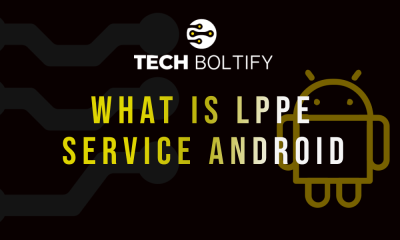
 Tech2 years ago
Tech2 years agoLPPe Service Android App and its Functions – How to Remove it
-

 Tech1 year ago
Tech1 year agoWhat is a Permission Controller – Control Manager Notifications
-
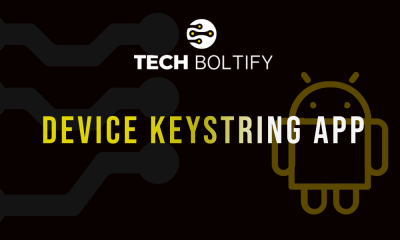
 Tech2 years ago
Tech2 years agoWhat is Device Keystring App On Android
-
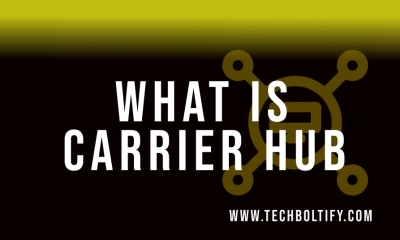
 Tech2 years ago
Tech2 years agoWhat is Carrier Hub – How to Resolve Processing Requests Issues
-

 Tech2 years ago
Tech2 years agoWhat is Summit IMS Service – How to Stop Syncing on Your Android Device
-
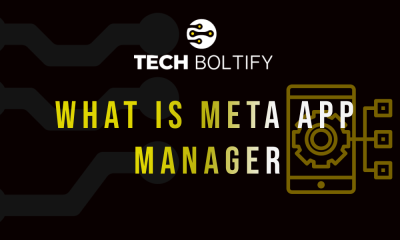
 Tech2 years ago
Tech2 years agoMeta App Manager – What is Meta App Installer
-

 Tech2 years ago
Tech2 years agoWhat is Cameralyzer Samsung – How to Fix or Uninstall Cameralyzer on Android

